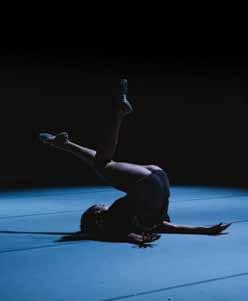
3 minute read
Dance Zfin Malta’s latest performance
from Artpaper. #12
by Artpaper
Review /Malta / Dance October - December ‘20
MALTA
Advertisement
Learning from Harari
ZfinMalta’s soul-searching study of Noah Yuval Harari’s . 21 Lessons for the 21st Century. Choreographed by ZfinMalta’s Artistic Director, Paolo Mangiola.
‘In a world deluged by irrelevant information, clarity is power”. Thus starts Harari’s latest foray into the labyrinthine truth that hides behind the fiction of our 21st century lives. His project is bound to remain frustrated. Like the 16th century anatomist’s search for the sanctuary of the soul, seated somewhere in the hummus of the human body, he is trapped in a quicksand of the unpredictable and ever-shifting forces of nature. Power is corrupting, clarity comes and goes, information – as relevant as it can be – is always misleading, and the menace of a deluge hangs heavily on our future as global warming reaches a point of no return. The declaration of his defeat is contained in his choice of words for the opening sentence.
That said, there lies an incredible wealth of symbolism contained in that first sentence. It conjures up images of Fritz Lang’s depiction of the supremacy of automation and the super-race, wartime footage of the Fuhrer, erect and arm outstretched above a marching sea of human bodies, oceans of personal data manipulated to determine artificially our destiny, and monumental sheets of ice plunging into hostile waters. Moments of clarity and moments of darkness alternate like the glimmering light of a primitive projection. Movement is relentless, wave upon wave crashing forward in the storm that catches the outspread wings of Walter Benjamin’s Angel of History. His head is turned nostalgically towards the ruins of the past, but he is propelled uncontrollably forward by the storm. That storm is called Progress.
. ZfinMalta, together with Luke Azzopardi (costumes) and Kane Cali’ (set), has KONRAD BUHAGIAR

dipped into the treasure trove of visual material that this insightful book offers up to as gifts to help us understand our possible futures. The rhythm of the performance is dictated by that of the book, with its twenty-one-partite structure and its alternating violent and visionary themes, which are expressively articulated by the at-once darkly melodic, psychedelic and dystopian music creat-

ed for the piece by Veronique Vella.
Paolo Mangiola’s work is a dancerly interrogation of the questions posed by the author, through his practice as a choreographer. “The idea was to create a work which is ‘episodic’, like watching a series, or browsing the internet. I also wanted the pace of the work to reflect the structure and rhythm of the book. I love the way Yuval Noah Harari gets us to think about the big topics – climate change, AI, immigration – and I wanted to challenge myself, the dancers, and our collaborators, to ‘translate’ these questions into dance, ultimately creating a parallel platform for the thinking the book provides”.
The project is an ambitious one that is grounded naturally and unpretentiously by the dancers who are unconstrained and lithe but rigorous. The energy that brings them together or separates them, as if guided by swarm intelligence that is the foundation of AI, expertly represents the vitality of life itself. Movement is implacable. Ruins and fragments provide a transient backdrop, meaningfully assembled and falling apart in turn. Gods come and go, and Love makes an appearance through Aristophanes’ theory of halves, beautifully and skilfully rendered by the dancers.
“And we had better understand our minds before the algorithms make our minds up for us”. Harari’s last sentence is, perhaps, the most perplexing one – the one that spells out the book’s failure to give us clarity. It begs the ultimate, and obvious, question: if we understand fully the operation of our minds, as the author recommends, will that not entail the loss of free will? Sorry, guys, but your soul just died! This is what the creators of algorithms will soon be telling us, as Tom Wolfe aptly pointed out in his eponymous essay (2000).
. ZfinMalta’s performance is a soul-searching exercise that, like the experiments of the Renaissance anatomist, does not arrive at any tangible conclusion. But unlike the book, with all its fascinating information, insights and predictions, that’s what gives it a soul.











